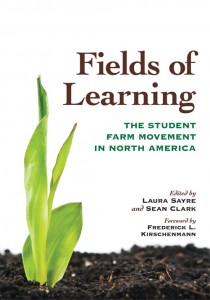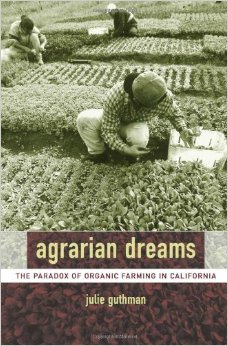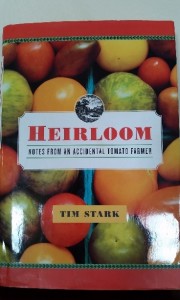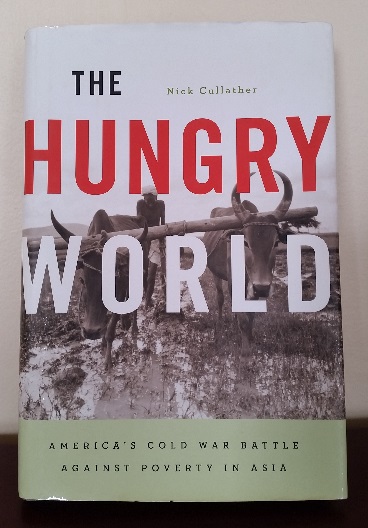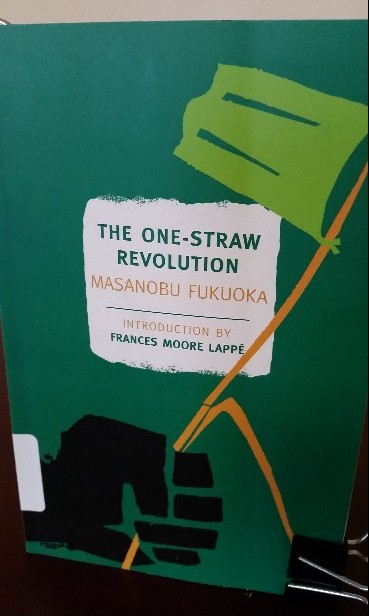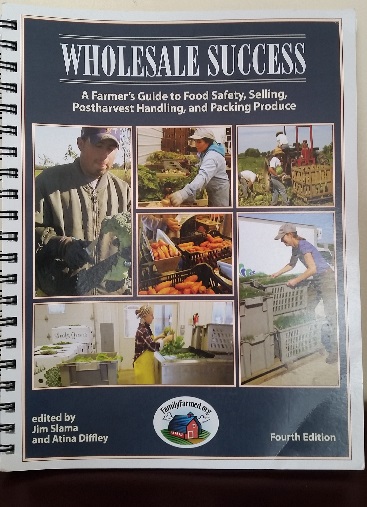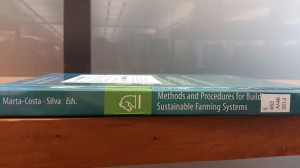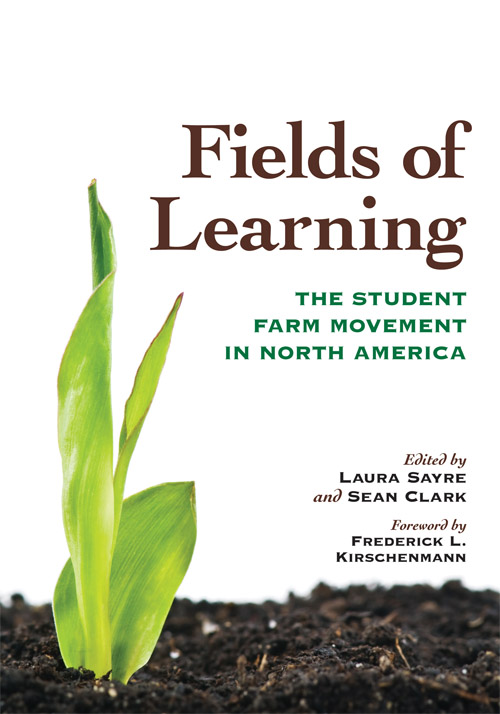
Just like most things in life, running a farm takes more than just back breaking labor, it takes know-how. And just like running a farm, being a good food consumer also takes know-how. And one of the best ways to get this know-how is through reading. So as part of my research, I’ve done a whole lot of reading in the last half a year. Much of what I read were academic papers or Growing For Market articles but here’s some of the highlights in terms of books.
Fields of Learning by Laura Sayre and Sean Clark
This is quite an important book in terms of historic examination of college farming in America outside of the land-grant schools. Very important read for anyone trying to be part of a college farm. Framed by Sayre and Clark, the bulk of this book is a collection of essays by those who either started (for the more recent examples) or have otherwise been involved with college farms in North America since their roots in the mid-19th century. It has 4 sections with 3 essays per section, each being a program started in a certain time frame. Good for thinking about the common boundaries we share in the college farm movement.
Agrarian Dreams by Julie Guthman
This book about the organic agriculture movement takes the most complete, nuanced understanding and delivers it in an accessible format. Anyone interested in food politics, the history of food and food production in America, or wondering why people hold such ambivalence for the organic label needs to read this book. Guthman begins with a history of agriculture in America for the last century or so and follows the organic movement closely, examining it in light of what much of the organic movement has become in California (and other places): a mirror of industrial agriculture with a few extra stipulations and a marked up price. She ends with the path for positive change informed by her findings, making the book not a complete downer.
A heartwarming, anecdotal tale of how an Heirloom tomato farmer rose to fame (written by that farmer in fact!) Heirloom is a good book because it highlights the somewhat vague transition many people make into farming, and Stark describes in detail the intense struggle it takes to make that transition. The book remains an optimistic piece, as it is a tale of Stark’s ultimate success. Good read for anyone interested the personal experiences of farmers or the workings of food production or local food distribution.
The Hungry World by Nick Cullather
While I read this for a class that wasn’t technically part of my EXCEL research, The Hungry World is a very important book for food studies people, historians, those interested in foreign or domestic policy or studying the development and interplay of science, technology, and policy. Cullather writes about the history of the Green Revolution, a global effort by governments, scientists, and workers to help feed the hungry, that took place mostly in the 1970s. And he details why this revolution failed. From incomplete science, to Cold War politics, to the domination of ‘experts,’ to inappropriately applied technological fixes, Cullather examines the Green Revolution’s roots in the United States and its travel through Mexico, India, and the rest of East and Southeast Asia.
The One Straw Revolution by Masanobu Fukuoka
Part philosophical manifesto, part natural farming guide, this is a very inspiring book for anyone who appreciates nature, agriculture, or accessible philosophy that divests from a limited American or European perspective. Fukuoka details what he calls his “do-nothing” farming inside, which he is quick to clarify does not mean that the farmer doesn’t work hard, rather that a farmer should first look at taking away unnecessary steps and processes from their farm cycle instead of adding them. With his method of natural farming, Fukuoka was acclaimed throughout the national and international farming scene for his methods which were some of the most productive in all of Japan. Very inspiring for any aspiring agrarian looking for new ways to grow and a new way to live.
Wholesale Success published by FamilyFarmed.org
This tome contains up-to-date information about USDA regulations and third-party guidelines on food safety, postharvest practices, and packaging. This in formation about cleaning storing, packaging and marketing produce is integral to anyone who runs a farm regardless of the size. It would also be a good read for anyone interested in seeing what produce actually has to go through before it can get to the farmers market or grocery store, or just anyone trying to understand the complexity and interconnectedness of everything that takes place on a farm and in our kitchens.
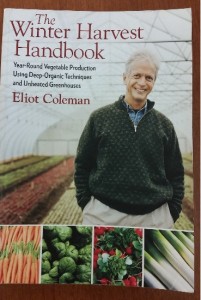
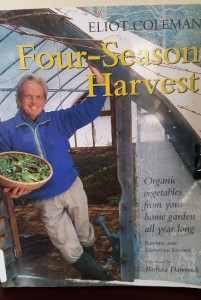
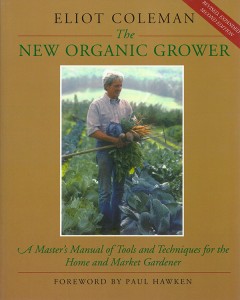 The Winter Harvest Handbook, Four-Season Harvest, and The New Organic Grower, by Eliot Coleman
The Winter Harvest Handbook, Four-Season Harvest, and The New Organic Grower, by Eliot Coleman
Coleman’s books are nice because they are very accessible, applicable to many things, and are packed with good information and tips for anyone trying to grow, whether in a backyard garden or a large vegetable farm. He is very focused on using few inputs and simple solutions to save money and increase outputs. He’s not completely environmentally minded, but his work certainly is a step in the right direction from many food producers, and his emphasis on minimizing off-farm inputs can be easily appreciated and useful to anyone looking to grow to save the planet.
The New Organic Grower is his first book and details what he calls “Deep-Organic” growing. Basically it details how to grow organically without turning basically mirroring industrial, ‘conventional’ agriculture with organically certified labels on all your fertilizer bags. If you were trying to start an organic vegetable plot, and you’d never farmed a day in your life, you could study this book and manage to grow better than the average home grower. He goes through how to do everything from preparing the soil to starting seed, weeding, using tools, and managing pests. He has decades of experience, and it shows in this book, where he also handily lists other resources for both additional learning, and information, supplies, and equipment needed for growing.
Four-Season Harvest is aimed directly at home gardeners, but its lessons can be extrapolated for a larger scale with some thought. In this book, Coleman focuses on how much fresh food can be grown in the winter, even as far north as he is in Maine or higher in the US, despite people’s assumptions. He explores his experiences with winter harvesting and the information he’s learned from farms in Southern France, which (as Coleman is prone to repeating) has the same amount of sun exposure as the northern United States.
The Winter Harvest Handbook is more focused on larger scale than Four Season Harvest, but provides good information for all growers. With two more decades of learning, growing, and experimenting, he does a lot to update his New Organic Grower while providing all new information about greenhouses, heated, unheated, and mobile. He also talks about his years of taking summers off and only farming in the winter (I remind you, he lives and farms in Maine.)
Methods and Procedures for Building Sustainable Farming Systems, edited by Ana Alexandra Marta-Costa & Emiliana Silva.
(Sorry for the weird picture of this one, I procured it through an Inter Library Loan from Wisconsin so there’s a huge sicker covering the name on the front cover)A quite dense collection of essays which detail the various scientific methods people have historically used in Europe an abroad to quantify or qualitatively gauge the sustainability of a farming system. I wouldn’t recommend this to the light reader, as not only is it highly theoretical and specific in instrumentality, but the fact that many of the various authors are not native English speakers and use jargon that isn’t quite common on this continent yet add to the difficulty of reading it. Still, this was a good book when it comes to theorizing what sustainability means and how to appropriately test for that in farming systems. It was made as a product of a conference of the IFSA of Europe.
As I read more and more, I’ll be sure to add to this with further recommendations. One day, not too long from now I might be publishing a longer bibliography of every source I’ve read recently, beyond just the books.
– Joe Ingrao, Winter 2015 Excel Scholar
